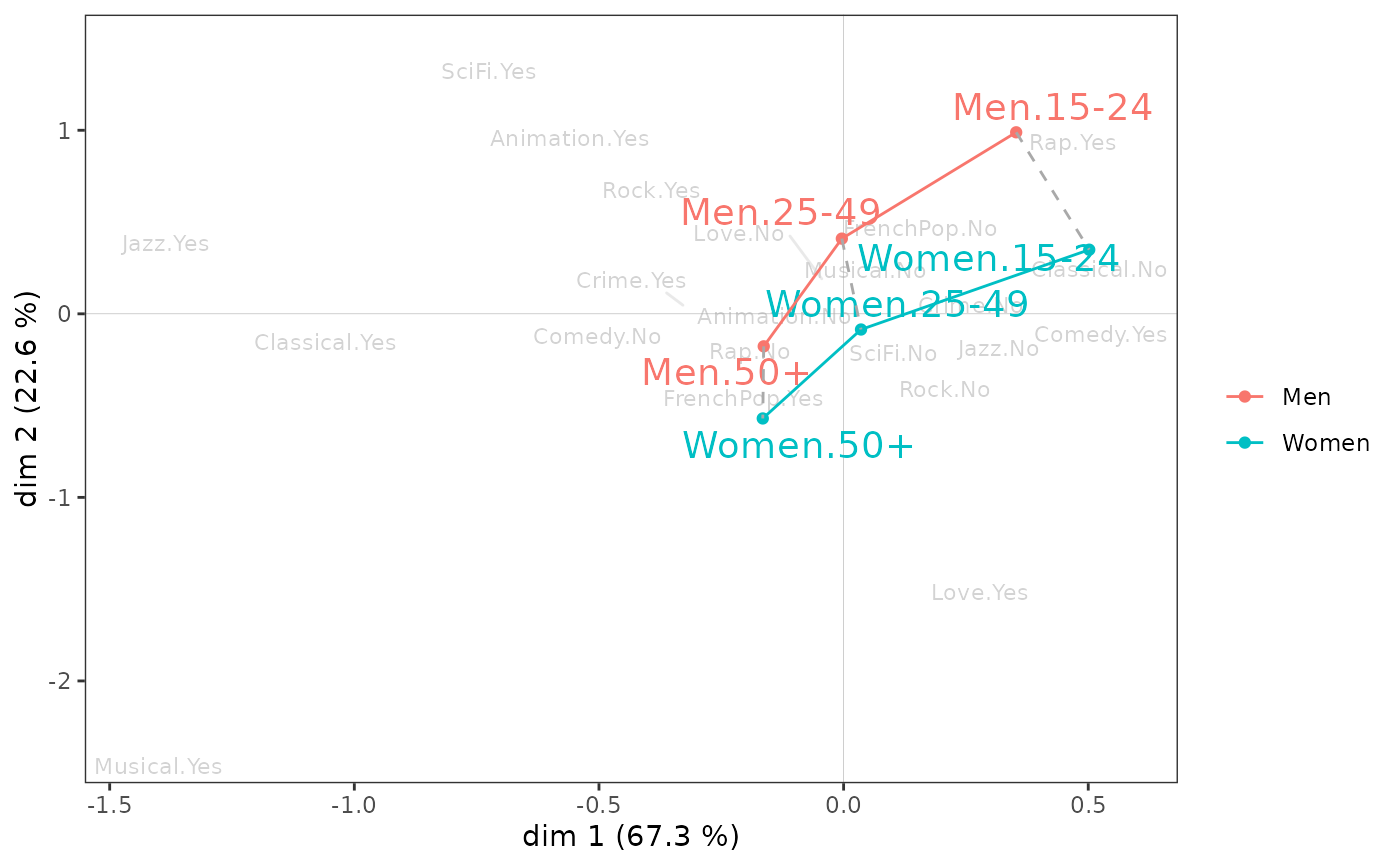Plot of interactions between two categorical supplementary variables
ggadd_interaction.RdAdds the interactions between two categorical supplementary variables to a MCA cloud of variables
Arguments
- p
ggplot2object with the cloud of variables or the cloud of individuals- resmca
object created with
MCA,speMCA,csMCA,wcMCA,bcMCA,stMCAormultiMCAfunction- v1
factor. The first categorical supplementary variable.
- v2
factor. The second categorical supplementary variable.
- sel1
numeric vector of indexes of the categories of the first supplementary variable to be used in interaction. By default, every categories are used.
- sel2
numeric vector of indexes of the categories of the second supplementary variable to be used in interaction. By default, every categories are used.
- axes
numeric vector of length 2, specifying the components (axes) to plot. Default is c(1,2).
- cloud
if "v" (default), the categories are plotted in the cloud of variables. If "i", the categories are plotted in the cloud of individuals.
- textsize
size of the labels of categories. Default is 5.
- lines
logical. Whether to add colored lines between the points of the categories of v1. Default is TRUE.
- dashes
logical. Whether to add gray dashed lines between the points of the categories of v2. Default is TRUE.
- legend
the position of legends ("none", "left", "right", "bottom", "top", or two-element numeric vector). Default is none.
- force
force of repulsion between overlapping text labels. Defaults to 1. If 0, labels are not repelled at all.
- max.overlaps
exclude text labels that overlap too many things. Defaults to Inf, which means no labels are excluded.
Value
a ggplot2 object
Note
Lines and labels are colored according to the first variable, using the default ggplot2 palette. The palette can be customized using any scale_color_* function, such as scale_color_brewer(), scale_color_grey() or scale_color_manual().
References
Le Roux B. and Rouanet H., Multiple Correspondence Analysis, SAGE, Series: Quantitative Applications in the Social Sciences, Volume 163, CA:Thousand Oaks (2010).
Le Roux B. and Rouanet H., Geometric Data Analysis: From Correspondence Analysis to Stuctured Data Analysis, Kluwer Academic Publishers, Dordrecht (June 2004).
See also
Examples
# specific MCA of Taste example data set
data(Taste)
junk <- c("FrenchPop.NA", "Rap.NA", "Rock.NA", "Jazz.NA", "Classical.NA",
"Comedy.NA", "Crime.NA", "Animation.NA", "SciFi.NA", "Love.NA",
"Musical.NA")
mca <- speMCA(Taste[,1:11], excl = junk)
# interaction between Gender and Age
p <- ggcloud_variables(mca, col = "lightgrey", shapes = FALSE)
ggadd_interaction(p, mca, Taste$Gender, Taste$Age)
